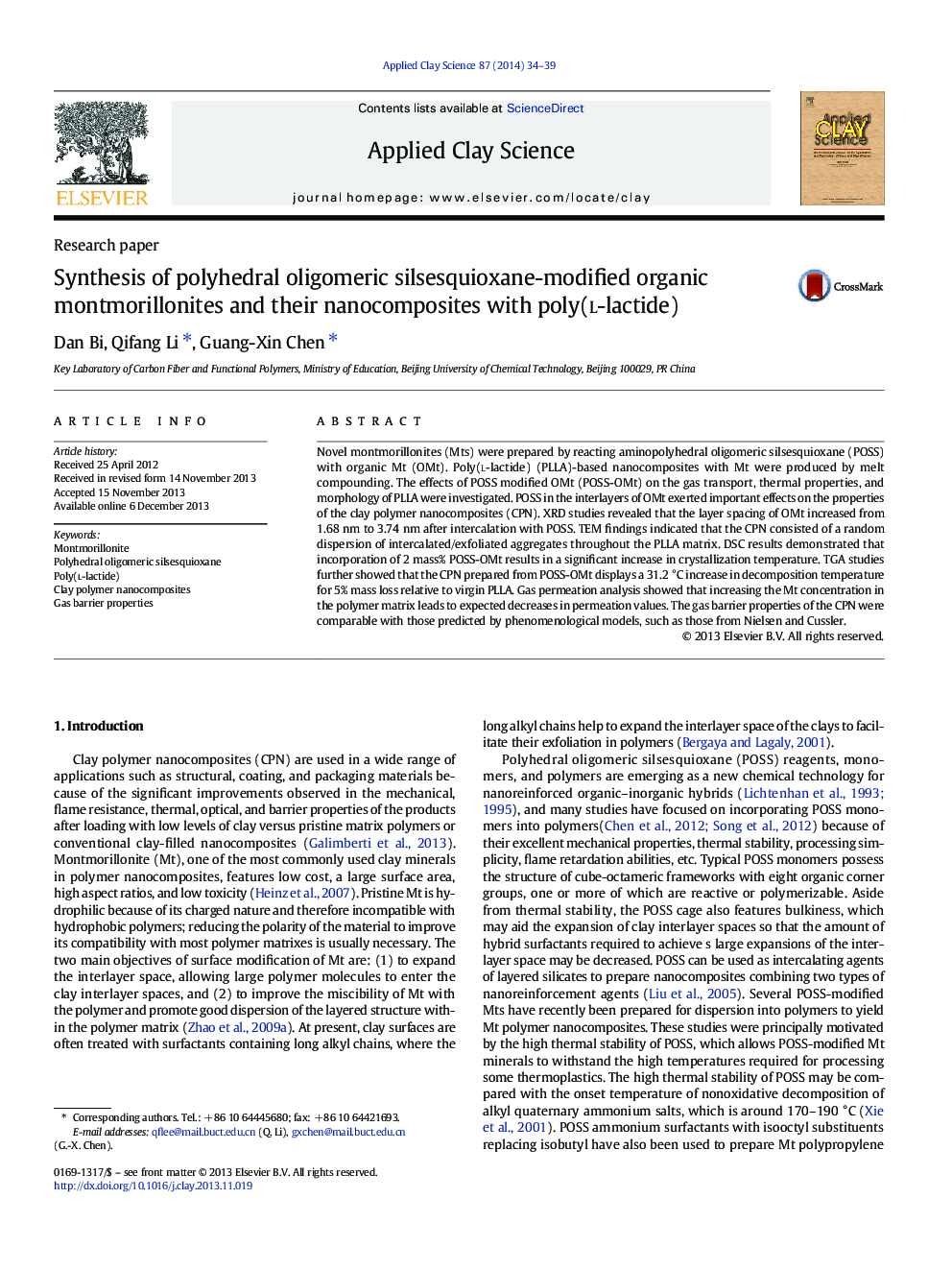| Article ID | Journal | Published Year | Pages | File Type |
|---|---|---|---|---|
| 1694945 | Applied Clay Science | 2014 | 6 Pages |
•The novel clay was prepared by reacting POSS with the organic montmorillonite.•The layer spacing of POSS modified clay increased from 1.68 nm to 3.74 nm.•Poly(l-lactide)/POSS modified clay nanocomposite displayed a 31 °C increase in T5%.•Nanocomposite with 10 mass% clay showed a 61 % decrease in gas permeability.•Gas permeabilities of nanocomposites were predicted by phenomenological models.
Novel montmorillonites (Mts) were prepared by reacting aminopolyhedral oligomeric silsesquioxane (POSS) with organic Mt (OMt). Poly(l-lactide) (PLLA)-based nanocomposites with Mt were produced by melt compounding. The effects of POSS modified OMt (POSS-OMt) on the gas transport, thermal properties, and morphology of PLLA were investigated. POSS in the interlayers of OMt exerted important effects on the properties of the clay polymer nanocomposites (CPN). XRD studies revealed that the layer spacing of OMt increased from 1.68 nm to 3.74 nm after intercalation with POSS. TEM findings indicated that the CPN consisted of a random dispersion of intercalated/exfoliated aggregates throughout the PLLA matrix. DSC results demonstrated that incorporation of 2 mass% POSS-OMt results in a significant increase in crystallization temperature. TGA studies further showed that the CPN prepared from POSS-OMt displays a 31.2 °C increase in decomposition temperature for 5% mass loss relative to virgin PLLA. Gas permeation analysis showed that increasing the Mt concentration in the polymer matrix leads to expected decreases in permeation values. The gas barrier properties of the CPN were comparable with those predicted by phenomenological models, such as those from Nielsen and Cussler.
Graphical abstractFigure optionsDownload full-size imageDownload as PowerPoint slide
